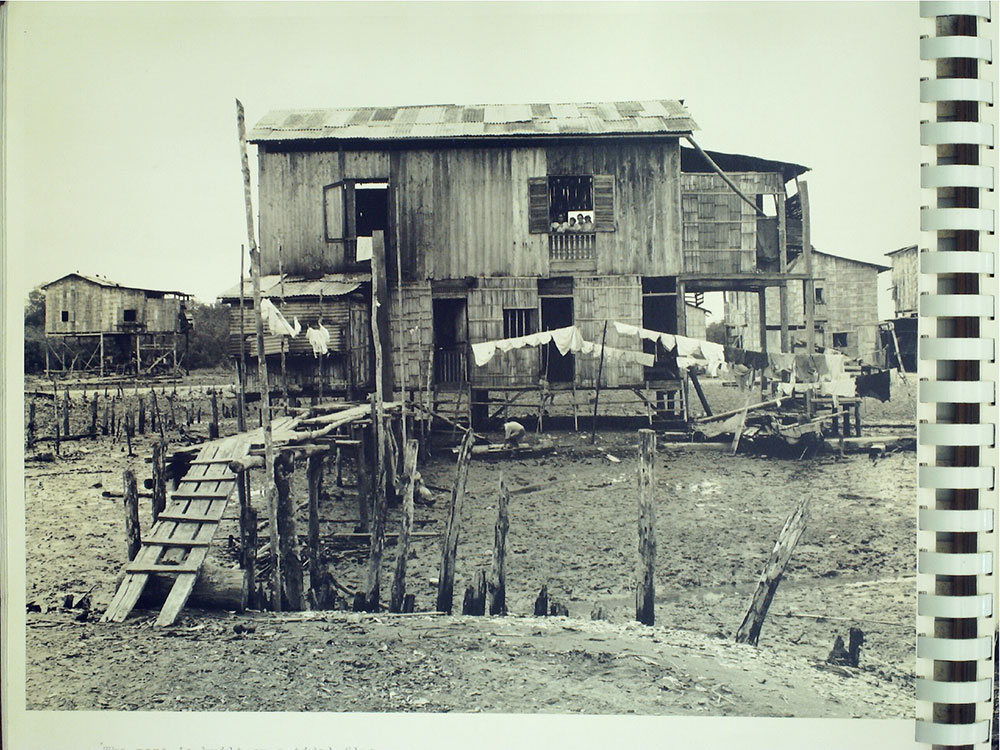
A private residence in the El Oro province after the Peruvian invasion: Dr. Monica Rankin said the photo, from the Franklin D. Roosevelt Presidential Library archives, not only shows the destruction that resulted from war but that poverty and underdevelopment were a serious problem in the province.
While sorting through old documents in the U.S. National Archives, a UT Dallas historian stumbled upon thousands of pages detailing the destruction and subsequent reconstruction of an Ecuadorian coastal province in the 1940s.
The story, Dr. Monica Rankin would later realize, was one that has remained relatively unfamiliar to both U.S. and Ecuadorian historians until now.
Rankin, who received a Fulbright Program research grant to continue the project, is heading to Ecuador for four months to consult with scholars and primary sources that can offer insight into the events.
The documents she discovered, technical mission reports from the U.S. Office of the Coordinator of Inter-American Affairs (OCIAA), shed light on the United States’ involvement in the rebuilding of El Oro, Ecuador, after a 1941 border war with Peru destroyed the province’s infrastructure.
Rankin, who serves as director of the Center for U.S.-Latin America Initiatives, teamed up with faculty from the Arts and Technology department to create this animated short that chronicles her findings.
Rankin, associate professor in the School of Arts and Humanities, said the documents hold detailed preliminary reports on the various needs in El Oro — sanitation, public health and infrastructural development — as well as photographs showing the destruction of war.
“Currently, I’m writing a general history of the OCIAA, and I hadn’t come across this episode in any of my previous research,” she said. “A thorough search through existing scholarship revealed that the office’s role in the reconstruction of El Oro has not been covered by scholars in the United States or in Ecuador.”
Embroiled in the thick of World War II, diplomats from the United States and a number of Latin American countries intervened in the conflict, citing “hemispheric unity,” and Ecuador was compelled to cede land to its Peruvian neighbors.
Rankin found that after the war, refugees returning to El Oro were confronted with a region completely ravaged by the conflict and a populace frustrated with political inaction.
The United States developed a two-part plan for the rehabilitation mission. First, the OCIAA was to solve the immediate refugee crisis as the population returned to El Oro. Second, the OCIAA wanted to rebuild and improve the province.
“Their reports back to Washington paint a rosy picture of their successes, but Ecuadorian sources indicate that many of the programs the OCIAA tried to introduce didn’t work and fell apart immediately after the U.S. mission left.”
Dr. Monica Rankin, associate professor in the School of Arts and Humanities, and director of the Center for U.S.-Latin America Initiatives
“From the beginning, U.S. leaders planned for the mission to stay in El Oro for approximately one year, and they did wrap things up within roughly 12 months,” she said. “Their reports back to Washington paint a rosy picture of their successes, but Ecuadorian sources indicate that many of the programs the OCIAA tried to introduce didn’t work and fell apart immediately after the U.S. mission left.”
She said her goal is to understand the El Oro project’s possible implications on World War II and Ecuador. It also gives her a chance to add to her comprehensive analysis of the OCIAA, which has been a topic in her research since her doctoral dissertation.
“An analysis of the OCIAA’s activities in Mexico was part of my first book,” she said. “That project sparked my interest to write a general history of the OCIAA. This office oversaw all aspects of U.S.-Latin American relations during World War II, and its activities set a precedent for U.S. strategies of cultural diplomacy around the world in the decades that followed.”
Rankin, who also serves as director of the Center for U.S.-Latin America Initiatives, also teamed up with faculty from the Arts and Technology department in the School of Arts, Technology, and Emerging Communication to create an animated short that chronicles her findings. She has used the animation to present her research at several academic conferences for groups such as the Latin American Studies Association, the World History Association and the Society for Historians of American Foreign Relations.